The Power of Pearls


(Photo courtesy of Unsplash)
ICYMI, International Women’s Day was celebrated around the world on March 8. This special celebration has been observed since the early 1900’s when female textile workers from New York City protested against unequal rights and unfair working conditions of women. Since ancient times, women have always been strong and powerful and it is rather interesting to note that such women have always worn and favoured the oldest known gemstone, and the only one created by a living creature — PEARLS — as their choice of jewellery.
In the earliest days, we had the likes of Roman Goddess Venus emerging from an oyster shell; Cleopatra and her enduring pearl earring dipped in vinegar and dissolved as she proved a point to Marc Anthony; we had Catherine de Medici and her famous six ropes that consisted of the largest pearls ever seen; a Persian Princess from 420 BC, had fragments of pearl jewellery in her sarcophagus; Homer paid an homage to Goddess Juno and her sparkling pearl earrings in his Iliad; Queen Elizabeth I celebrated her military success while adorned and covered in pearls either as jewellery or sewn into her gowns.

(Photo courtesy of Pexels)
Fast forward to modern times, the most influential and powerful women such as Princess Grace of Monaco have also been known to favour pearls both on and off screen and she even once said that, “pearls are the queen of gems and the gem of queens;” Queen Elizabeth II have always worn her iconic three-strand pearls which she loved so much — she had identical ones made; Princess Diana wore her much cherished Lover’s Knot pearl tiara on hundreds of occasions, which her daughter-in-law, the Princess of Wales, Catherine has duly inherited; other famous Hollywood royalties who have been photographed wearing pearls were Audrey Hepburn and Elizabeth Taylor (who almost lost her famous 50.6 carat La Peregrina, the largest pear-shaped pearl ever seen, which was eventually found in her puppy’s mouth and which by the way was, a generous gift from her then-husband, Richard Burton); and then of course, former US First Ladies from Jackie Kennedy to Barbara Bush and Michelle Obama have also been photographed with their signature pearls.

(Photo of Queen Elizabeth II courtesy of Unsplash)
Pearls have long been associated with powerful and influential women. Yes, these extremely unique gemstones that are valued for their shine and lustre have long been a symbol for power, elegance, sophistication, and wealth which is why it was worn throughout history by the most influential and high-born women. During the early years before cultured pearls were created in the late 1800’s, pearls were considered rarer than diamonds and today, some of the world’s most expensive pearls are even rarer than gold because they are notoriously more difficult to harvest and produce. Pearls are produced within the soft tissue of a living shelled mollusk or another animal, such as fossil conulariids. Let’s find out what makes pearls so beloved.
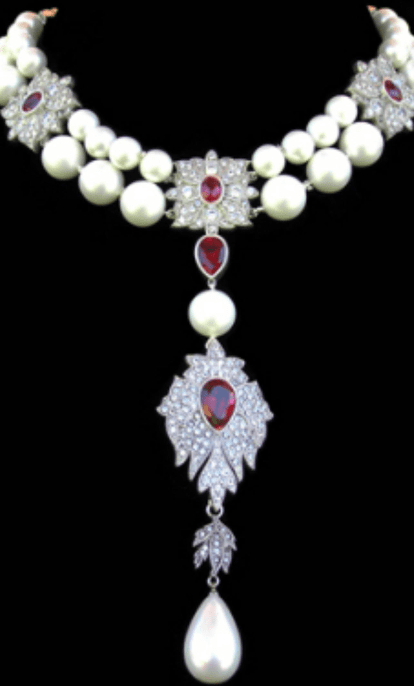
The 16th century old La Peregrina which means the Wanderer, Elizabeth Taylor’s pearl necklace was auctioned by Christie’s in 2011 for $11.8 million. It was found by an African slave on the coast of the isle of Santa Margarita in the Gulf of Panama in the mid-16th century.
Benefits of wearing pearls. For one thing, pearls are not limited to their aesthetic purpose. Wearing pearls helps accentuate the power of a woman. It helps to overcome a tense mind, anxiety and depression. Pearls are also associated with the range of physical healing properties and considered as beneficial for lung-related diseases, constipation, and heart problems. It can also help cure insomnia and control anger. Fortunately for us, there are two types of pearls we can all benefit from: Natural pearls and Cultured pearls.
Natural Pearls vs. Cultured Pearls. Both pearls are real gemstones and only differ from the way they are formed. Both natural and cultured pearls are formed when an irritant enters the oyster or mollusk which causes it to respond to the irritant. The difference is that when cultivating pearls, pearl farmers purposely place the irritant inside the oyster. However, cultured pearls are still considered real pearls and an estimated 99% of the pearls found on the market today are cultured. Natural pearls on the other hand are considered more valuable and rarer because they are created in the depths of the ocean. It takes more than 100,000 of these deep-sea-living creatures to make just one strand of pearls, hence their value is not affordable for many.
Again, always remember that cultured pearls are real pearls and have many benefits than natural pearls. Apart from having lower costs compared to natural pearls, cultured pearls still share the same pearl qualities as natural pearls. Pearl farmers nurture and tend oysters or mussels with utmost care because obviously they want to produce successful crops. Also, because they are formed in farms that are privately owned, cultured pearls promote safety both for the oyster and the cultivators compared to natural oysters and pearl divers which cause death through drowning and hypothermia. Oh, and just an added fun fact — in 1893, the Japanese founder of the famous high-end Mikimoto pearls, Kokichi Mikimoto, was the first in the world to successfully culture a pearl. Personally, one prefers to concentrate on the various benefits of cultured pearls so let’s delve deeper into the different varieties of cultured pearls.
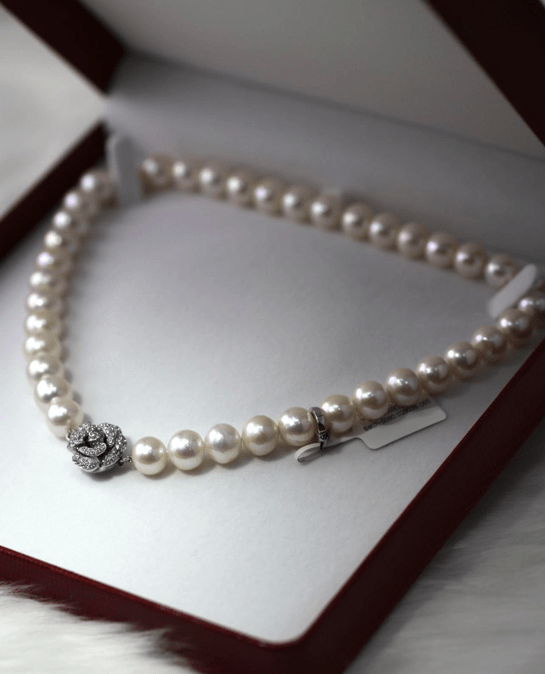
(Photo courtesy of Unsplash)
5 Varieties of Cultured Pearls. There are 5 main varieties of cultured pearls: Freshwater, Akoya, Tahitian, Sea of Cortez, and the White and Golden South Sea pearls.
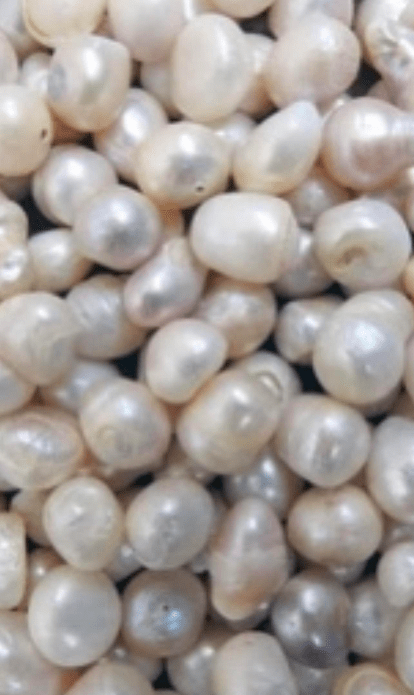
Freshwater pearls. (Photo courtesy of the author)
Freshwater Pearls. These pearls are the less expensive variety of cultured pearls compared to Akoya, Tahitian, Sea of Cortez, and the South Sea cultured pearls. 99.99% of freshwater pearls are farmed in China’s man-made aquaculture farms and freshwater lakes. They range in size from 2.0-3.0mm up through 11.0-12.0mm, with newly experimented variations that can reach the size of 14.0mm to even 15.0mm! The freshwater mussels produce different natural colours such as white, pink, lavender, and peach. Common treatments used are dyes such in the case of dyed black Freshwater pearls or commonly referred to as Peacock due to their highly iridescent violet and blue-green hues.
Freshwater pearl shape is usually as close to a true round shape as possible, but free form and symmetrical Baroque shapes are also widely available. Price range varies from as low as $20 to as high as thousands. Of the five varieties, freshwater pearls are the most durable because they are the only cultured pearl type that is 100% solid crystalline nacre and the thicker the nacre is, the more durable the pearl is.
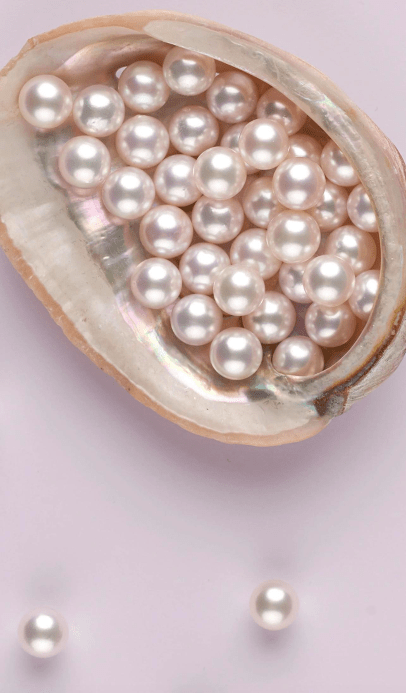
Akoya pearls. (Photo courtesy of the author)
Akoya Pearls. These must-have varieties of cultured pearls are cultivated in China, Vietnam, and Japan and are grown in the Pinctada fucata martensii saltwater oyster, a native to the colder waters of the Pacific Ocean surrounding Japan, southern China and Vietnam. Of the three countries, Japan is the acclaimed leader in the production of Akoya pearls producing only the best, the finest and most consistently beautiful Akoya pearls. The best Japanese Akoya pearls are known as the Hanadama pearls, which translates to “Flower pearls.” Akoya pearls range in size from 2.0-3.0mm up through 9.0-9.5mm, and very rarely, 9.5-10.0mm. Its colours range from white, golden, and silvery-blue. The Akoya white pearls are the classic white pearls that every woman must have in her jewellery collection. Prices range from $75 to high thousands.
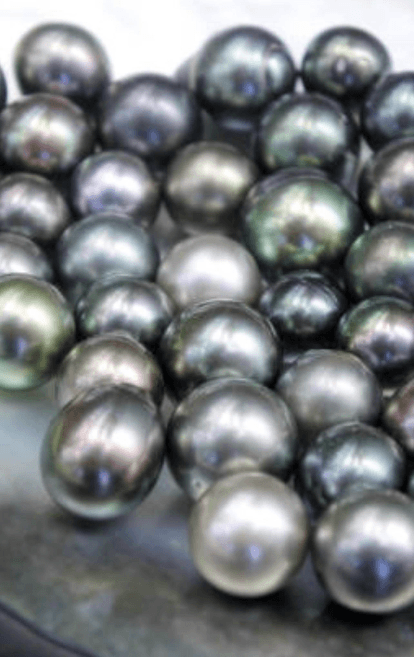
Tahitian pearls. (Photo courtesy of the author)
Tahitian Pearls. These pearls are farmed in the saltwater lagoons and tropical atolls of the islands in French Polynesia; it is grown in the Pinctada margaritifera saltwater pearl oyster (also known as the “black lip” oyster). Sizes can range from 8.0-9.0mm up through 15.0-16.0mm, with the average sizes ranging from 9.0-10.0mm through 12.0-13.0mm. Sizes over 15.0mm are RARE, and extremely expensive! Tahitian pearls are naturally black in colour, typically in the shades of darker Charcoal greys to pastel Dove greys. However, the black colours can have overtones such as peacock colour, aubergine, and dark green which appears to shimmer over the main grey body colours. Tahitian pearls don’t use common treatments other than buffing after harvest and gentle washing. Prices range from $80 to high thousands depending on jewellery style, quality of pearls and size.
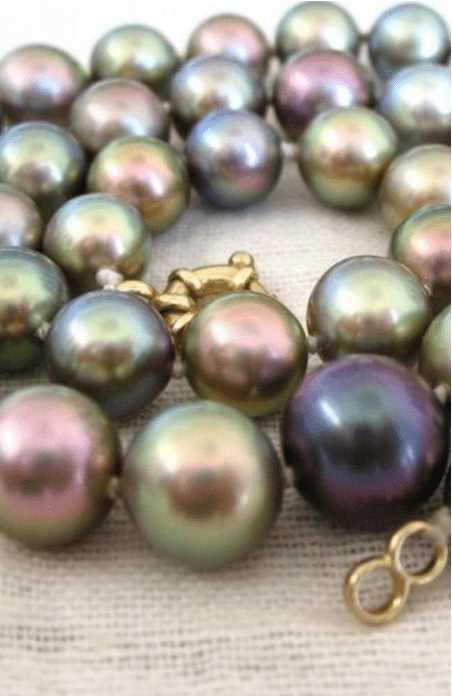
Sea of Cortez pearls. (Photo courtesy of the author)
Sea of Cortez Pearls. These pearls are the rarest cultured pearls in the world. These pearls are farmed on only a single pearl farm operating out of the sea of Cortez (also known as the Gulf of California) in Guyamas, Mexico. The Perlas del Mar de Cortez pearl farm produces less than 4,000 cultured pearls each year. These pearls are the only other naturally-coloured “black” cultured pearl type besides Tahitians, except its colours are more intense and have richer overtones; the Sea of Cortez pearl oyster called Pteria penguin is also known as the “rainbow lip oyster” which produces various colours such as green, aubergine, blue-green, pistachio, rose, lime, and copper. Size ranges from 8.0-9.0mm up through 11.0-12.0mm, with larger pearls being EXTREMELY RARE. Price ranges from $200 to hundreds of thousands of dollars.
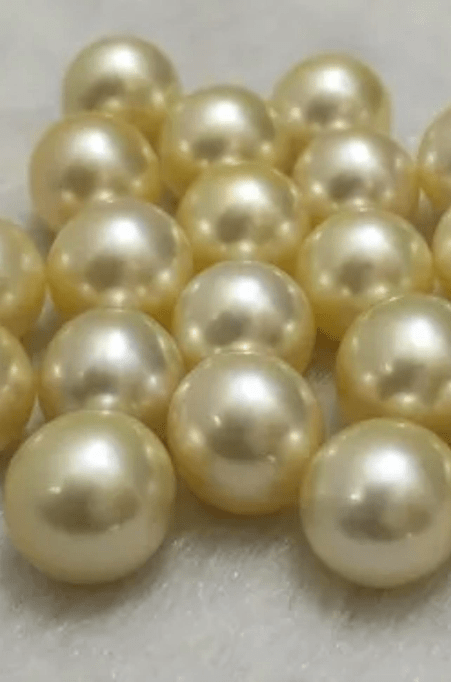
Golden South Sea pearls. (Photo courtesy of the author)
White and Golden South Sea Pearls. These pearls are the most luxurious and largest pearls of the five varieties. Famously known as the “Queen of Pearls”, they are farmed in the Pinctada maxima saltwater oyster, which grows up to a foot in diameter at maturity, therefore making it the largest cultured pearl variety out there. The Gold-lipped P. maxima oyster which produces Golden South Sea pearls is mostly farmed in the Philippine Islands while the Silver-lipped P. maxima oyster produces the White South Sea pearl, and is mainly farmed along the Northern coast of Australia. Sizes for both White and Golden South Sea pearls range from 8.0-9.0mm up through 20.0mm, with the average sizes ranging from 9.0-10.0mm through 14.0-15.0mm. Sizes over 15.0mm are RARE, and very expensive.
The silver-lipped Pinctada oyster produces the finest white coloured pearls whereas the gold-lipped Pinctada oyster produces the gorgeous palette of natural Golden pearls. Moreover, these South Sea pearls don’t have any common treatments other than gentle washing and buffing after harvest. Cultured South Sea pearls have the thickest nacre layers of all saltwater cultured pearl types which gives it the satin lustre trademark. Prices range from $200 to hundreds of thousands and again, it depends on the jewellery design, the size and quality of the pearls.
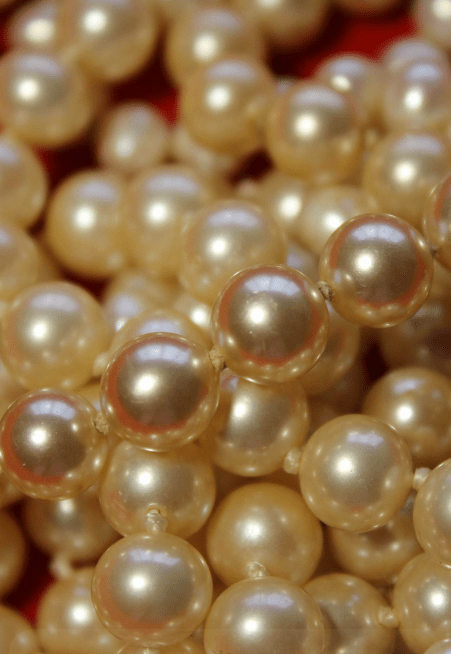
(Photo courtesy of Unsplash)
Types of Pearl Jewellery. A woman will neither be too young nor too old to start her pearl collection! I just started building my pearl collection. I’m not into diamonds, gold or silver jewellery, but I’m so into pearls! My love and obsession over pearls started because I fell head over heels in love with a thoughtful present given by my other half — a one-strand 12.0mm white Akoya saltwater pearl necklace from Tiffany & Co.’s Signature pearl collection — which came with an aquamarine gemstone engagement ring. Because of this truly special pearl necklace, I’m slowly building my pearl jewellery collection, buying a few pieces at a time from various reputable pearl dealers.
I decided to start collecting because I wanted to leave something special and valuable to my future granddaughters. In this way, they’ll be keeping me close to their hearts and ears even when I’m long gone! While every woman dreams of a Tahitian, or a South Sea pearls, do bear in mind that it is always more financially practical to start your collection with the basics or the essential pearls so here are a few types of pearl jewellery that you can start with:
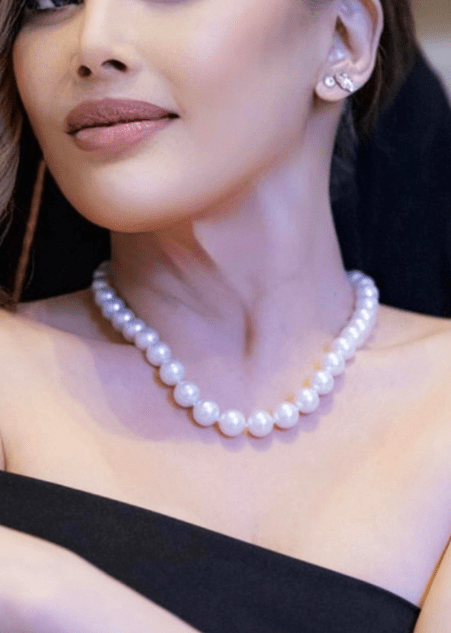
Classic one-strand 12mm AAAAA quality white Akoya 18-inches in length cultured pearl necklace from Tiffany’s Signature pearl collection. (Photo courtesy of the author)
One-strand classic white pearl necklace. You can start your collection with a classic white pearl one-strand necklace that can range from 6-7mm in size to the larger 12-14mm size. I tend to favour the larger sizes and another favourite of mine is the Edison cultured pearls. This type of cultured pearls is the brainchild of brother and sister Weijian Zhan and Weiyu Zhan. Their family has over 40 years’ experience in pearl farming in China. Edison Pearls are of high quality and high-grade with perfect round shape. Their sizes may vary but they can become almost three-quarters of an inch with such unique lustre that can be easily comparable with that of high-end saltwater pearls such as South Sea pearls or Tahitian pearls. However, the good news is that Edison pearls are also affordable! You don’t need to break your bank when starting your collection!
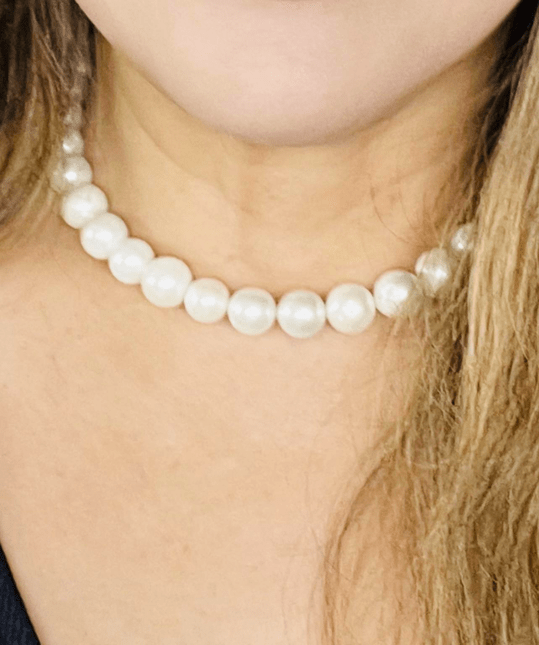
Edison AAA quality classic 12mm white cultured pearls 16-inches in length necklace from Pearls Only, an online pearl dealer. (Photo courtesy of the author)
Double strand pearl necklace. Perfect for any occasion, double strand pearls add a touch of elegance to any outfit. You can even be more adventurous with this type of jewellery — why not choose either pink or black pearls for your double strand? These colours are a safe bet. The only thing you have to remember about starting a pearl jewellery collection, you can surely collect different colours and sizes, but you must first pay attention to the quality of your pearls.
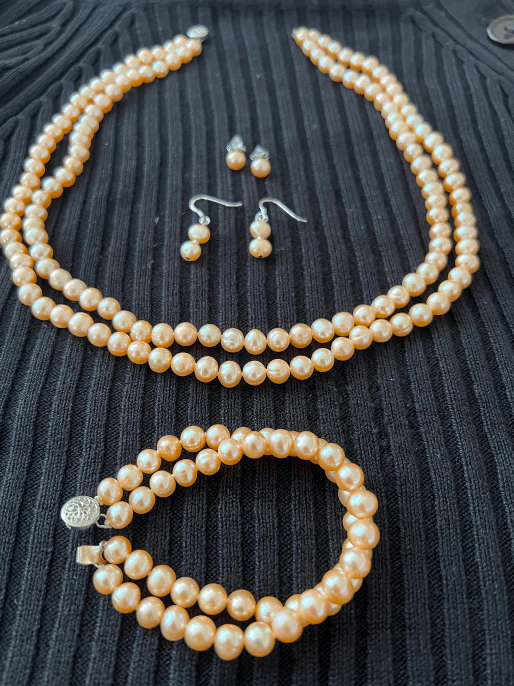
Double strand classic AAA quality 6-7mm natural pink freshwater cultured pearl 18-inches in length necklace, pink stud earrings, pink drop pearl earrings and double strand pearl bracelet set from Pearls Only, an online pearl dealer. (Photo courtesy of the author)
Three-strand pearl necklace. Channel your inner Queen Elizabeth II by opting for a three-strand white pearl necklace. Her Majesty loved this style so much she actually owned three nearly identical pearl necklaces that she rotated freely when she was alive. You definitely can’t go wrong with this style. You can have it either in choker style, which is around 14-16 inches in length or the more popular Princess style, which is 18 inches in length. Yours truly had a friend sourced a beautiful three-strand princess style necklace from the Philippines.

Three-strand classic AAA quality 7-8mm white freshwater cultured 18-inches in length pearl necklace from the Philippines. (Photo courtesy of the author)
Baroque pearl necklaces. Your pearl collection won’t be complete if you don’t have baroque pearls. These irregular and non-spherical pearls are mantle-tissue nucleated instead of bead nucleated. The best baroque pearls come from the Philippines!
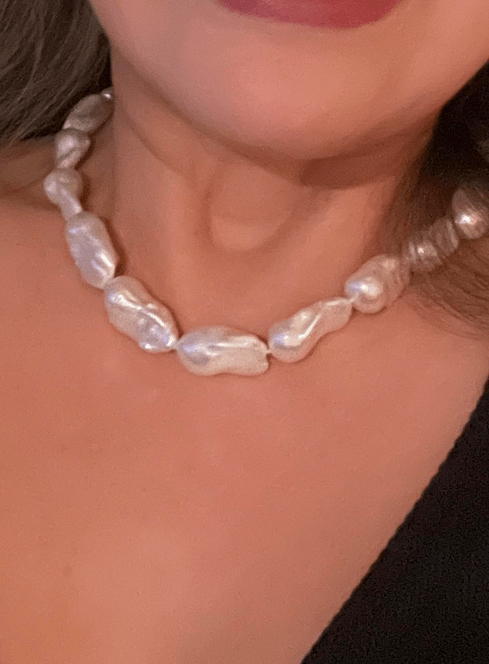
Baroque 20mm AAA quality white cultured 17-inches in length pearl necklace from the Philippines. (Photo courtesy of the author)
Stud pearl earrings. Again, this is the essential and basic pearl jewellery that any woman should have! You can start with dainty smaller size stud Pearl earrings or you can indulge on larger 12-14mm stud Pearl earrings! These pearl essentials will hardly make a dent on your purse strings!

7-8mm white freshwater pearl stud earrings ring from Pearls Only. (Photo courtesy of Pearls Only)
Drop pearl earrings. Simple and classic pearl drop earrings are easy to style whichever way you like. This style is definitely a must-have!

Baroque white cultured pearls, bold drop earrings from Mejuri. (Photo courtesy of Mejuri)
Climber Pearl earrings. A modern classic statement of an earring! There’s no better option for a distinct statement than pearl climber studs.
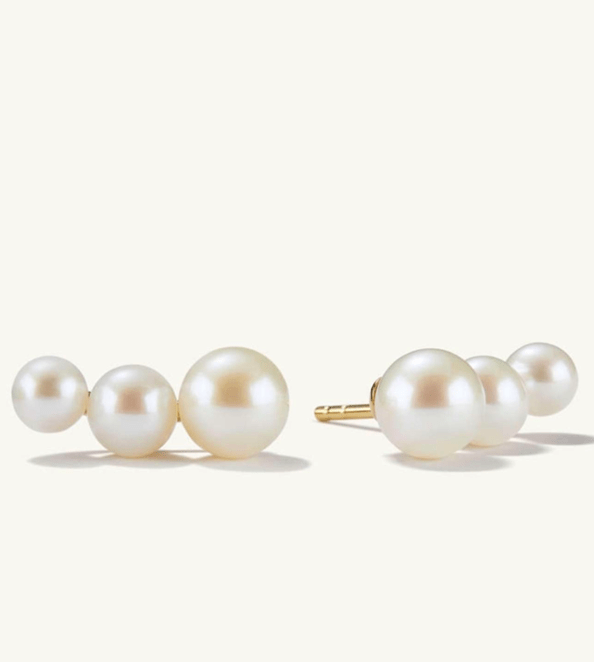
Contrast Pearl Climber Studs white freshwater cultured pearl earrings from Mejuri. (Photo courtesy of Mejuri)
Solitaire pearl ring. Your collection won’t be complete without the traditional solitaire pearl ring. Again, always start with a white pearl as this colour represents purity, beauty, new beginnings, and sincerity.

Large white Akoya seawater 9-10mm pearl ring from Pearls Only. (Photo courtesy of Pearls Only)
Different lengths of necklaces. When choosing your pearl necklace, remember that there are different lengths of necklaces. Here are the different lengths you can go for:

Choker length. (Photo courtesy of the author)
Choker length. This 14-16 inches in length style is one of the most versatile in terms of necklace length. This particular length will fall just a bit above most collar bones thus making it suitable for every body type as it is a “one style, fits them all” type of necklace length.
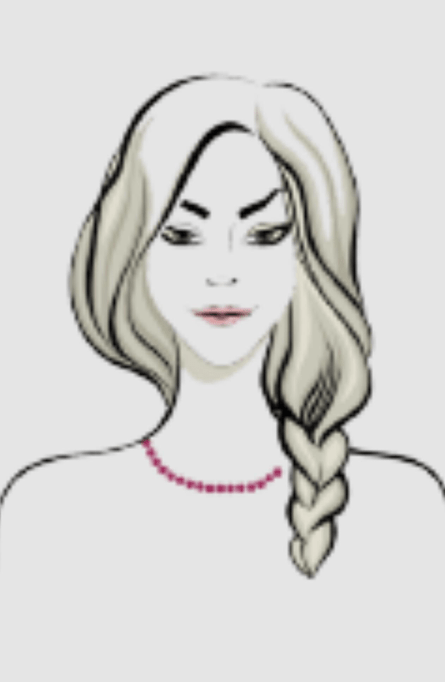
Princess length. (Photo courtesy of the author)
Princess length. The Princess length is traditionally between 17-18 inches in length and is slightly longer than the choker length. It is appropriate for women of all ages and is especially flattering on petite women.
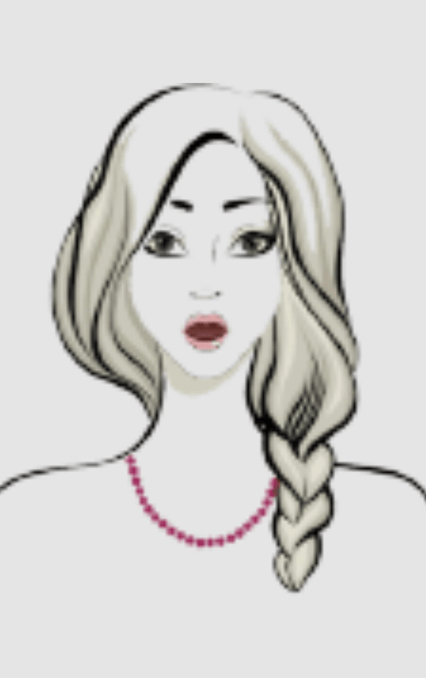
Matinée length. (Photo courtesy of the author)
Matinée length. The Matinée length is between 23-24 inches in length and falls lower than the Princess length. It is usually worn as a single piece jewellery and goes well with a turtleneck or a buttoned up shirt.
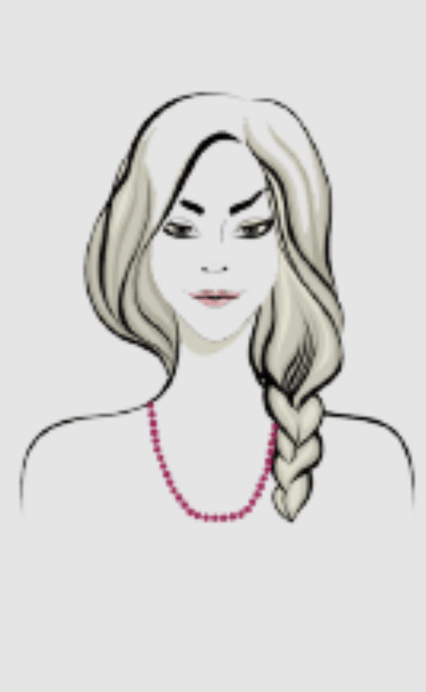
Opera length. (Photo courtesy of the author)
Opera length. At a maximum of 36-inches in length, the Opera is longer and falls in the middle of a woman’s chest area. It is a highly popular length for layered as well as single strand jewellery designs. This particular length is ideal for plus size and women of shorter stature as it gives the torso a more elongated and slimmer look at the same time.

Rope length. (Photo courtesy of the author)
Rope length. The Rope length is traditionally between 50-51 inches in length and can even go longer. This length when worn once around the neck favours the taller women while if this length is worn as a wrapped style, it complements most body types and heights. This length can be worn as a single layer, doubled and even tripled layers of pearls.
How to choose your pearls. Now that we’ve established the different varieties, different types of jewellery, colours and sizes, here are a few important factors when it comes to choosing your pearls.
Lustre. This literally makes or breaks pearls as a gemstone. Luster describes the way light reflects off the pearl surface (Sharp and Highly Reflective or Soft and Blurry). The sharper the Luster, the more valuable the pearl.
Surface Quality. Choose pearls with clean and smoother surfaces. By doing so, these pearls are more highly valued than those with multiple inclusions. Your reflection should be seen clearly on the surface of a cultured pearl. Any pearl that looks too chalky or dull indicates low quality.
Shape. Perfectly round pearls are the rarest shape of all, and the most valued. After that, you can look for perfectly symmetrical semi-baroque shapes like tear-drops and ovals, then circled baroques and finally, free form baroques which are totally asymmetrical.
Overall grade. Below are more details on pearl grading.
AAAAA: Sheer perfection! This is the highest quality in pearls and is expensive and exclusive.
AAA: Nearly flawless pearls with a high lustre and a surface that’s 95 percent free of defects. It is the highest quality of non-round shaped pearls.
AA: High lustre with a surface that’s 75 percent free of defects.
A: Lower lustre and defects on more than 25 percent of the surface.
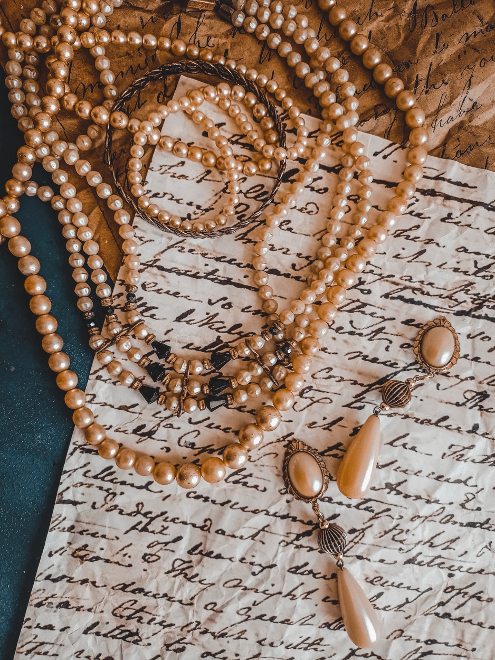
(Photo courtesy of Pexels)
Nacre. Nacre is the substance from which pearls are made of. Since nacre determines lustre, nacre quality is a huge factor when determining a pearl’s value. Pearls with thick nacre have a better chance of having a high-quality lustre. The nacre quality must not have a chalky appearance and must be acceptable. Pearls that are dull, chalky, or that blink aren’t as attractive as those that are solid and gleaming plus they also won’t be as durable. Saltwater and Freshwater pearls are almost completely nacre and will look beautiful and will certainly last for many years.
Where to source your pearls from. Depending on your budget and type of pearls you’re going for, here are a few recommendations where you can buy your pearls from:Affordable range: I highly recommend buying your pearls from Mejuri in Canada which you can purchase either in person or online. I personally vouch for Mejuri because their expert jewellers only use the highest quality materials from precious metals—from recycled gold and 18k gold vermeil, to responsibly sourced diamonds and AAA-grade gemstones such as pearls. You can also travel to the Philippines and visit multiple reputable stalls at Greenhills to source for your pearls. They also sell high grade pearls without breaking your bank. For online shopping, I highly recommend Kultura from the Philippines.
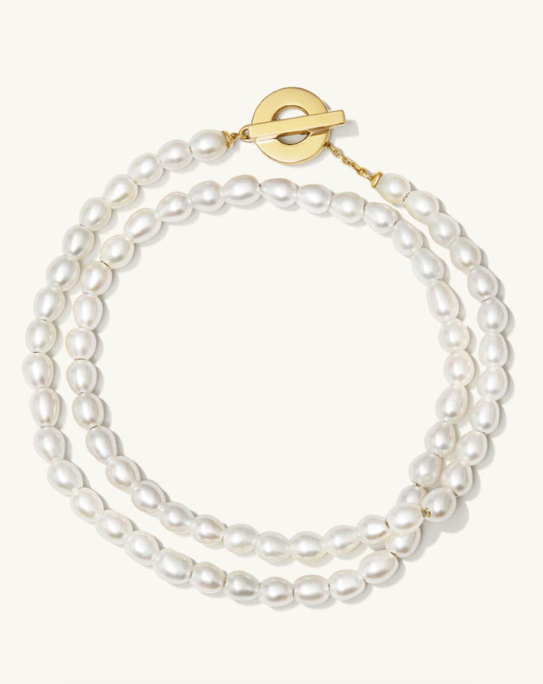
Bold freshwater pearl bracelet. (Photo courtesy of Mejuri)
Mid-range: Check out online pearls sellers such as Pearls Only or The Pearl Source as they offer high grade pearls. Both international companies are the largest importers of Freshwater, Akoya, Tahitian and South Sea pearls worldwide. Both international companies create all jewellery pieces in house and ensure that every order adheres to the highest standards of pearl quality available anywhere.
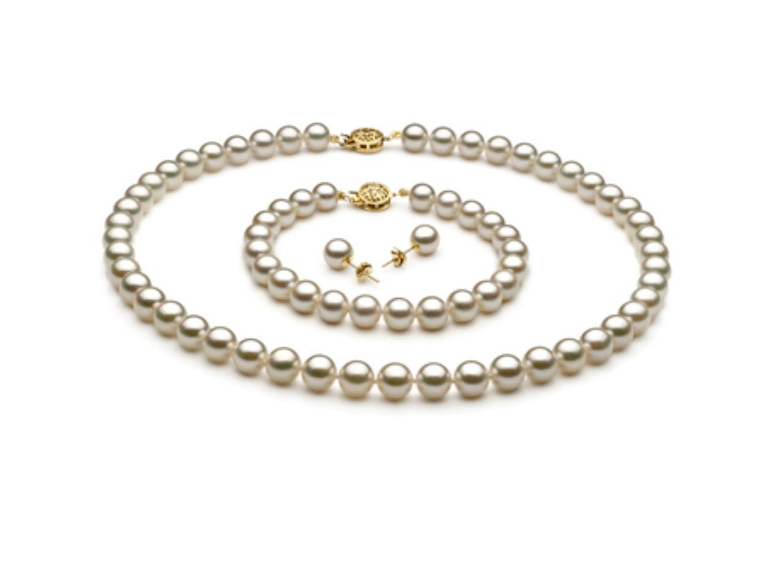
7.5-8mm AAA Quality Japanese Akoya Cultured Pearl Set in White. (Photo courtesy of Pearls Only)
High-end: For high-end pearls, you definitely must go with Mikimoto pearls, Tiffany’s, Yoko London pearls, and in the Philippines, definitely go for Jewelmer — it’s the real deal when it comes to sourcing pearls!
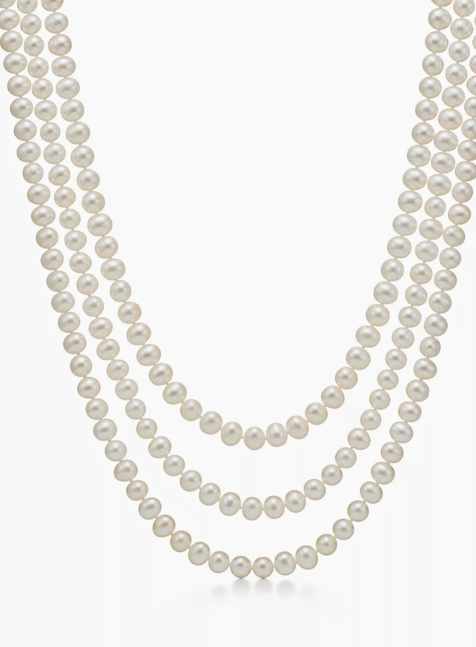
Pearl Wrap necklace from Ziegfeld collection. (Photo courtesy of Tiffany &Co.)
One last thing and perhaps the most important thing you have to know while building your pearl collections: its authenticity. To determine whether pearls are fake or real, the first step you can take is to touch them and feel the temperature. Real pearls are cold to touch for the first couple of seconds before warming up against your skin. Next, look for tiny irregularities. In a strand of cultured pearls, you can always see tiny differences between them, even when they are well matched and top quality.
If the pearls are completely identical and perfect in terms of size, colour, shape, and surface characteristics, they are most likely fake. A quick tried and tested way to determine if your pearls are real or fake is by rubbing the pearls lightly against each other or on your front teeth, they will feel a little gritty. Fake or imitation pearls, however, usually feel smooth or glassy. The best thing is to buy pearls from reputable stores as your pearls will come with an authentication certificate. I’d rather not wear any jewellery than wear a fake one!
Now ladies, what are you waiting for? Start your pearl collection! I will leave you with this quote by Coco Chanel, “A woman needs ropes and ropes of pearls.” Pearls are always appropriate at any occasion and truly indispensable in every woman’s wardrobe. Pearls are today’s Comeback Queen in the jewellery world.






















